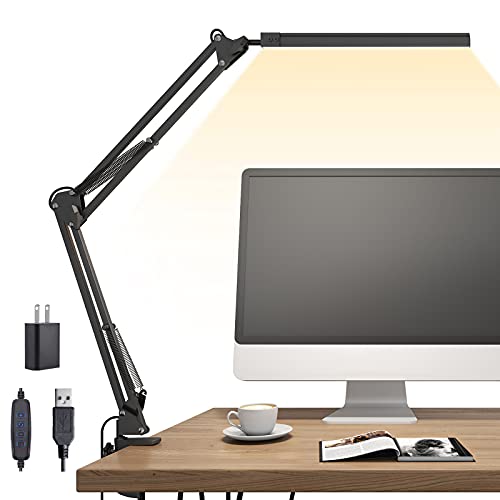20 Essential Tips for Working Remotely
In the modern era, it's not just the tech-savvy digital nomads enjoying the benefits of remote work. Since the onset of the COVID-19 pandemic, the world has seen a seismic shift towards flexible working options. In 2020, an estimated 41.8% of professionals in the U.S. were working remotely post-pandemic, according to Upwork's “Future Workforce Pulse Report.” Today, in 2023, that figure has continued to rise steadily.
Welcome to our comprehensive guide, “20 Essential Tips for Working Remotely.” Whether you're new to the remote work game or an old hand looking to sharpen your skills, we've got you covered.
In this article, we're diving into the realities of remote work, the benefits, the challenges, and most importantly, how to navigate this new normal effectively. We've distilled this into seven essential categories to help you optimise your productivity, maintain work-life balance, and nurture your professional growth while working from your favourite cosy corner at home or your dream destination.
Whether you're a solo freelancer managing multiple gigs, an employee in a multinational corporation transitioning to a remote role, or an entrepreneur building a start-up company with a distributed team, there's something here for everyone.
We'll cover everything from setting up your workspace for success to managing your time effectively, maintaining strong communication with your team, and even ensuring your mental well-being amidst the solitude that sometimes accompanies remote work.
By the end of this guide, you'll be equipped with actionable advice and strategies to make remote work feasible, enjoyable, and rewarding. Let's dive in and explore how to make the most of this flexible working era.
Introduction
Before diving into the tips, let's define remote work. Remote work refers to work outside the traditional office environment. Remote workers may work from home, a coworking space, or any location with an internet connection. Remote work has been gaining popularity in recent years due to technological advancements, the need for flexibility, and cost savings.
Working remotely has its pros and cons. On the one hand, it allows you to work from anywhere, save time and money on commuting, and work on your schedule. On the other hand, it can be challenging to stay productive, focused, and connected with your company. In the following sections, we will explore some tips for working remotely successfully.
Table of Contents
1 – Setting up your Workspace
One of the most crucial aspects of working remotely is setting up your workspace. Your workspace should be comfortable, conducive to work, and free of distractions. Here are some tips for setting up your workspace:
Choosing the Right Workspace

When creating a workspace that supports your productivity and focus, there are a few things to remember. First, finding a quiet space to work without being interrupted or distracted is crucial. This means avoiding high-traffic areas of your home or places where there might be a lot of noise.
Next up, lighting is essential! Make sure you have plenty of light in your workspace to prevent eye strain and keep you alert. Natural light is best, but if that's not an option, try to find a lamp or light source that provides a similar brightness level.
Lastly, comfort is important, too. Choose a comfortable chair and desk to sit and work at for long periods. If you're uncomfortable or in pain, you'll be more likely to get distracted and have difficulty staying focused on your work.
And one more thing to remember: avoid working in your bedroom if possible. When you use your bedroom as a workspace, it can be harder to relax and wind down at the end of the day, impacting your sleep and overall well-being. So, set up your workspace in a separate room or area of your home.
Ergonomics
When it comes to setting up your workspace, it's not just about finding a quiet, well-lit spot. You also want to make sure that your workspace is ergonomically designed to prevent any health problems down the line.
What does that mean exactly? It means you want to ensure your workspace is set up to support good posture and prevent strain on your back, neck, and other body parts. And the good news is that you can do a few simple things to ensure your workspace is ergonomic.
First and foremost, invest in a comfortable chair that supports your back and encourages good posture. When you sit in your chair, your feet should be flat on the ground, and your hips should be level with your knees. You also want to make sure your chair has adjustable height and backrest settings so that you can customise it to fit your body.
- 【ERGONOMIC DESIGN OFFICE CHAIR–Improve Your Posture】The design of the backrest fits the shape of the human spine, with the adjustable lumbar support, the office chair will give your back strong support. And the thick seat also can relieve the hip pressure to offer you comfort. Thick padded back & seat take this chair to the next level of comfort. Choose this office chair, choose comfort.
Next up, your desk is just as crucial as your chair. Ensure it's at the right height so your elbows are at a 90-degree angle when you type. If your desk is too high or too low, it can cause strain on your neck, shoulders, and back.
Finally, your monitor should be at eye level so you're not straining your neck to look up or down. If you're using a laptop, consider using a separate monitor to adjust to the right height.
By ensuring your workspace is ergonomically designed, you can prevent back pain, neck pain, and other health problems from sitting at a desk for long periods. So, invest in a comfortable chair, or desk, and monitor and care for your body while you work!
Lighting
It's essential to have a well-lit workspace with plenty of natural light. Why, you ask? Well, poor lighting can cause a whole host of problems. For starters, it can lead to eye strain, which can be uncomfortable and distracting. I'm sure you've experienced that feeling of tired and strained eyes after working for a while in dim lighting. It's not fun!
- 【10 Brightness Eye-Caring & 3 Color Temperature】Long arm lamp provides Dimming Design (from 3200K to 6500K). Its light is very uniform, can prevent blue light damage to the eyes. This lamp is suitable for all ages, no matter the children or grandparents, easily protect your family's eyes.
But that's not all. Poor lighting can also make you feel more fatigued, reducing your productivity. It's hard to get much done when you need help to keep your eyes open and stay focused. So, if you want to optimise your workspace and maximise your work time, prioritise good lighting.
One of the best sources of light is, of course, natural light. Not only does it make you feel more energised and alert, but it's also good for your overall health and well-being. If you can position your workspace near a window or somewhere where you can get plenty of sunlight, that's ideal. But if that's not possible, you can also invest in suitable quality lamps or other artificial lighting sources to keep your workspace well-lit.
Personalisation
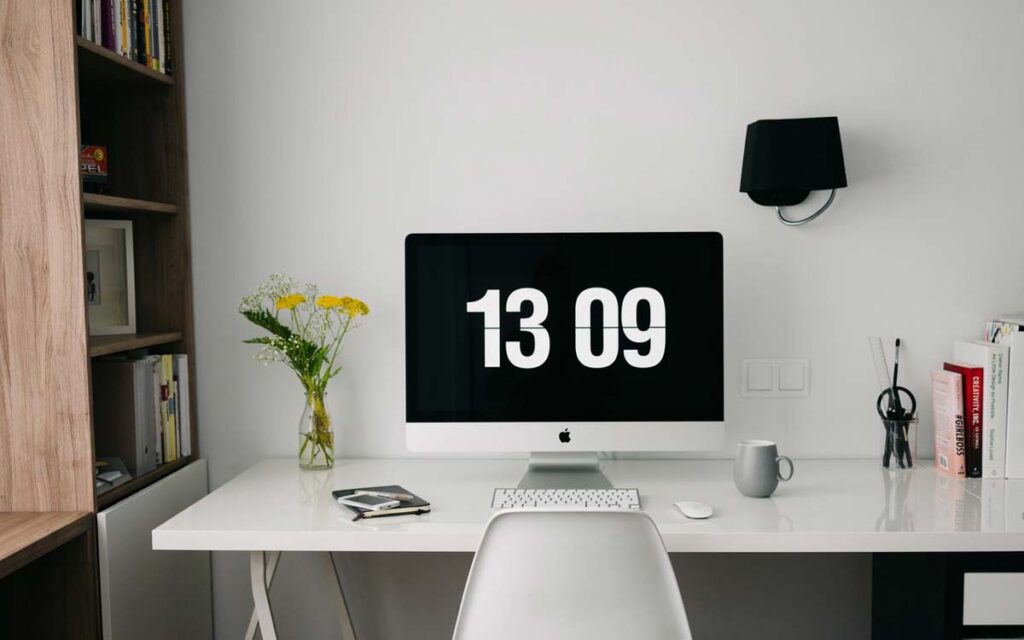
Adding plants to your workspace can be a great way to liven up the environment and add some natural beauty. Plants are not only aesthetically pleasing, but they also provide a range of benefits. They can improve air quality, reduce stress, and increase productivity. So, whether you prefer a succulent or a full-blown indoor jungle, adding a few plants to your workspace makes a difference.
Another way to personalise your workspace is by adding artwork. Whether a painting, photograph, or print, artwork can significantly add visual interest and inspiration to your space. Choose pieces that speak to you and reflect your style. It's also great for injecting colour and life into a bland or dull workspace.
Finally, don't be afraid to add other decorative items that make you happy and comfortable. It could be a favourite mug or a cosy throw blanket. Or you may prefer a collection of knick-knacks or inspirational quotes. Whatever it is, make sure it brings you joy and helps you feel at ease in your workspace.
2 – Staying Focused
Working remotely can be challenging, with many distractions competing for your attention. Here are some tips to help you stay focused:
Sticking to a schedule
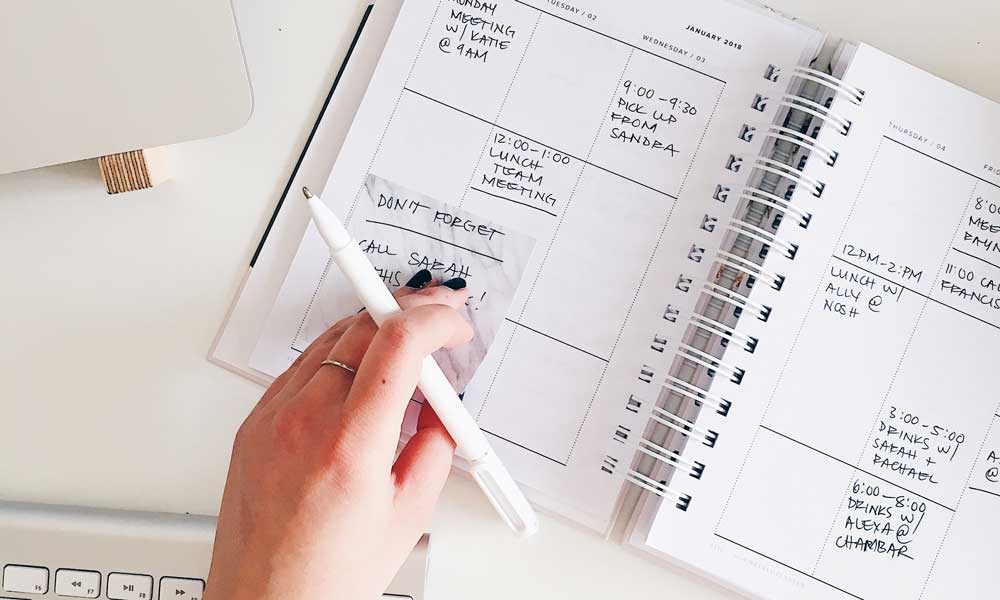
If you're working from home, it can be tempting to blur the lines between work and home life. After all, when your office is just a few steps away from your bed, it's easy to get caught up in work and forget everything else. However, it's essential to maintain a healthy work-life balance, and one of the best ways to do that is by creating a work schedule and sticking to it.
Start by setting specific working hours. This will help you establish a routine and get into the habit of being productive during particular times of the day. It's crucial to choose hours that work best for you and consider any other commitments or responsibilities you have. For example, if you have young children at home, you may need to work around their schedule.
Once you've set your working hours, stick to them as much as possible. Avoid working outside these hours, as this can lead to burnout and make it harder to switch off from work. It's also essential to take regular breaks throughout the day. This will help you stay refreshed and focused and avoid the feeling of being glued to your computer for hours on end.
When creating your work schedule, include time for other vital activities, such as exercise, hobbies, or spending time with family and friends. This will help you maintain a healthy work-life balance and avoid feeling like work is taking over your life.
Avoiding distractions
Distractions can hamper our productivity, whether the ping of a notification or the lure of social media. But don't worry; there are ways to eliminate these distractions and get back on track!
One way to minimise distractions is by turning off notifications on your devices. You won't be interrupted by email, social media or messaging notifications while working. You can always check them during designated break times. Trust me; this can significantly affect your focus and concentration.
If you're working in a noisy environment, using noise-cancelling headphones can be a great way to block out unwanted sounds and help you stay focused. This is especially helpful if you have noisy neighbours or family members at home. Many noise-cancelling headphones are available in the market with different price points, so you can find one that fits your budget and preferences.
Another great way to eliminate distractions is by using an app to block distracting websites. These apps allow you to set a timer for how long you want to work without being tempted by websites like social media, news, or entertainment sites. Some apps also track your usage to see where you spend most of your time online.
Using productivity tools
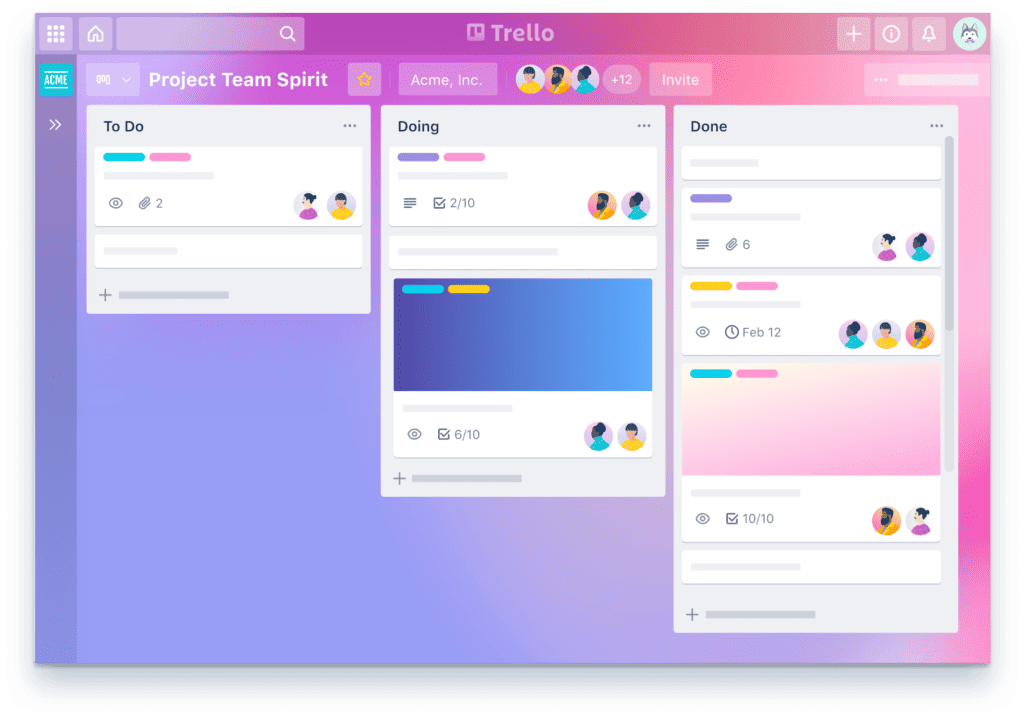
One of the most helpful tools is task management software. This software allows you to create and manage tasks in one place, so you don't have to worry about forgetting essential to-dos or feeling overwhelmed by a long list of tasks. You can easily prioritise tasks, set deadlines, and track your progress. Some popular task management tools include Todoist, Trello, and Asana.
Another helpful tool is time-tracking apps. These apps allow you to monitor how much time you spend on each task so you can identify areas where you may be wasting time and make adjustments as needed. This can be especially helpful if you're billing clients by the hour or trying to improve your time management skills. Some popular time-tracking apps include Toggl, RescueTime, and Clockify.
Project management tools can be a lifesaver if you're working on larger projects. These tools allow you to collaborate with team members, assign tasks, and track progress all in one place. This can be especially helpful if you're working with remote team members and need a way to stay connected and informed. Some popular project management tools include Asana, Basecamp, and Monday.com.
Taking breaks
Now, when we talk about taking breaks, we're not just talking about mindlessly scrolling through social media for hours on end. Instead, try to engage in activities that will help you refresh and refocus.
One great way to do this is by taking a walk. Not only does walking get you moving and increase blood flow, but it also provides a change of scenery that can help you clear your mind and relieve stress.
If you're not a fan of walking, don't worry. You can try many other activities, such as yoga or stretching. These activities can help you loosen up any tense muscles and promote relaxation.
And let's remember the power of a good cup of coffee (or tea, if that's your thing). Taking a coffee break can allow you to step away from work, enjoy a hot drink, and take a few moments to yourself.
Remember, taking regular breaks doesn't mean you're slacking off. Giving your mind and body a chance to rest and recharge to return to your work feeling refreshed and energised is essential.
3 – Communication
Communication is vital when working remotely. Here are some tips for effective communication:
Choosing the right communication tools

When working remotely, one of the most crucial things to consider is how you communicate with your colleagues and team members. Choosing the right communication tools can make all the difference in keeping everyone on the same page and ensuring that work is done efficiently.
There are several communication tools that you can use, and the right one for you depends on your specific needs. For example, video conferencing can be a great choice when conversing face-to-face with someone not in the same room. It's perfect for team meetings, client calls, or even one-on-one catch-ups with your boss.
If you need to send quick messages back and forth, instant messaging (IM) can be a fantastic option. IM is great for sending short, informal notes and can help you keep in touch with your colleagues in real time. It's perfect for quick updates, asking questions, or even checking in to say hello.
Email is another communication tool that can be useful for remote work. It's great for sending longer messages that require more detail and formality. Emails are also a good option for sending attachments like documents or spreadsheets.
Each tool has pros and cons; you may need to combine them to complete your work effectively. For example, you might use video conferencing for team meetings but rely on instant messaging for quick daily questions or updates.
Staying connected with colleagues

Regular check-ins are a great way to stay connected with your colleagues. It's important to schedule regular one-on-one meetings with your boss or team members to discuss work progress, address concerns, and offer support. This can help you build strong relationships with your colleagues and feel more connected to the team.
Team meetings are also crucial for remote workers, allowing them to connect with your team, share updates and ideas, and collaborate on projects. Attending team meetings, even virtual ones, is essential as they can help you stay in the loop and feel like part of the team.
Another way to foster community working remotely is by having virtual coffee breaks. This is a great way to replicate your water cooler conversations in an office setting. It's a chance to catch up with colleagues, chat about non-work-related topics, and take a break from the daily grind. Depending on your preference, you can schedule virtual coffee breaks as a team or with individual colleagues.
In addition to regular check-ins, team meetings, and virtual coffee breaks, join social channels or online groups to connect with colleagues outside work. This can be an excellent way to build relationships, share interests, and foster community.
Overcoming language and cultural barriers
Working remotely can be a fantastic experience that allows you to collaborate with people worldwide. However, it can also present some unique challenges when dealing with different cultures and languages.
To overcome language and cultural barriers, it's essential to approach your colleagues with patience, respect, and an open mind. Remember that everyone brings their own experiences and perspectives to the table, and taking the time to understand these differences can help you work together more effectively.
Researching their customs, traditions, and communication styles is good if you work with people from different cultures. This can help you avoid misunderstandings and build stronger relationships with your colleagues. For example, in some cultures, it's considered rude to speak too directly, while in others, it's expected.
If you're working with people who speak different languages, consider learning some key phrases in their language. Even if you're not fluent, speaking someone's language can go a long way in building trust and rapport. Additionally, there are many translation tools available that can help you communicate more effectively.
4 – Building Trust
Building trust with your colleagues is essential when working remotely. Here are some tips to help you build trust:
Building trust with colleagues

One of the most important things you can do is to be proactive. Don't wait for someone else to reach out to you – take the initiative to schedule regular check-ins with your colleagues. This can be as simple as a quick video call to check in on a project or a more extended conversation to catch up on what's been happening in each other's lives.
Another great way to build relationships is to share your interests with colleagues. Maybe you're really into hiking or love trying new recipes in the kitchen. Whatever it is, take some time to share your passions and learn about what your teammates are interested in, too. This can help you bond over shared hobbies and experiences.
Lastly, participating in team-building activities can be a fantastic way to build relationships with colleagues. This could involve anything from a virtual happy hour or game night to an online fitness challenge. Finding activities everyone can enjoy to help you feel more connected as a team is critical.
Overcoming micromanagement
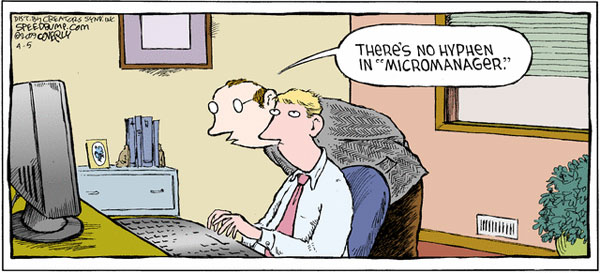
One of these challenges is micromanagement, which can be tough to overcome when you're in a different physical space than your manager.
But don't worry; there are a few things you can do to overcome micromanagement and build trust with your manager. First and foremost, it's crucial to communicate proactively with your manager. Please keep them in the loop about what you're working on, how you're progressing, and any roadblocks you encounter. This will help build trust and transparency between you and your manager.
Additionally, it's essential to provide regular updates. Let your manager know when you've completed a task, and ensure they know any key milestones or achievements you've reached. This will help demonstrate your progress and give your manager a clear idea of what you're working on.
Finally, it's vital to demonstrate your ability to work independently. This doesn't mean you shouldn't ask for help when you need it, but it does mean that you should take ownership of your work and be proactive about finding solutions to any challenges you encounter.
Proving your worth
As more and more companies transition to remote work, it's essential to figure out how to prove your worth even when you're not physically in the office. But don't worry; there are a few things you can do to make sure your value to the team is evident.
First and foremost, being proactive is vital. Take the initiative and seek opportunities to contribute before your manager or team assigns you tasks. Look for areas where you can add value and share your ideas with the team.
Another important aspect of proving your worth when working remotely is meeting deadlines. Ensure you know all the deadlines for your projects and do everything you can to meet them. This shows you're dependable, which is especially important when your team can't see you in person.
Of course, producing high-quality work is also essential. Ensure you understand each project's expectations and deliver work that meets or exceeds those expectations. Take the time to review your work and make sure it's error-free and polished before submitting it to your manager or team.
Finally, focus on delivering results and demonstrating your value to the team. This means tracking your progress and being able to quantify the impact of your work. When you can show concrete results, it's easier for your manager and team to see your value.
5 – Balancing Work and Life
One of the challenges of working remotely is balancing work and life. Here are some tips to help you maintain a healthy work-life balance:
Avoiding burnout

Firstly, setting boundaries between your work and personal life is essential. This means having a designated workspace and sticking to your working hours. Avoid working in bed or on your couch, as this can blur the lines between work and relaxation. Also, be transparent with your colleagues and clients about your working hours and when you can communicate.
Taking breaks is also crucial for avoiding burnout. Getting caught up in work and forgetting to take time for yourself can be easy, but regular intervals can increase productivity and prevent burnout. Schedule short breaks throughout the day, and take a more extended lunch break to recharge your batteries.
Prioritising self-care is another crucial aspect of avoiding burnout. This means taking care of your physical and mental health. Schedule regular exercise, whether a daily walk or a yoga session, to get your body moving and reduce stress. Make time for relaxation, whether reading a book, bathing, or practising meditation. And remember to stay connected with friends and family through social activities, even just a video call.
Taking care of your mental health
One way to combat isolation and stress is by seeking support from your colleagues or a mental health professional. Feel free to reach out to your coworkers and chat with them about work or even have a virtual coffee break. Consider speaking with a mental health professional who can provide valuable support and guidance during this challenging time.
Practising mindfulness is another way to manage your mental health while working remotely. Mindfulness involves being present in the moment and observing your thoughts and emotions without judgment. You can take a few minutes daily to practice mindfulness meditation or even take a few deep breaths when stressed.
Finally, engaging in self-care activities is essential for maintaining good mental health. The key is to make time for yourself and do things that bring you joy and relaxation.
6 – Overcoming Challenges
Working remotely presents unique challenges. Here are some tips for overcoming them:
Technical difficulties
First things first, make sure you have reliable internet. A solid and stable internet connection is essential for remote work, so if you're experiencing slow or unreliable internet, it's worth troubleshooting the issue or upgrading your plan if necessary.
Next, it's always a good idea to have backup devices on hand, just in case. For example, if you're working on a laptop, consider having a backup power source or an extra charger handy. You might also want a backup device, like a tablet or a smartphone, to use in case your primary device fails.
Finally, it's crucial to have a troubleshooting plan in place. This could include keeping a list of helpful resources (like tech support phone numbers or online forums) or ensuring you have a basic understanding of how to troubleshoot common issues yourself.
Staying motivated
One thing you can do is set goals for yourself. Clear goals can help you stay focused and motivated, giving you a sense of purpose in your work. Set daily, weekly, or even longer-term goals that align with your career objectives.
Another key to staying motivated when working remotely is staying organised. This could mean creating a to-do list or a schedule to keep yourself on track or using productivity tools like project management software or time-tracking apps. Feeling motivated and productive is much easier when you're organised and on top of your tasks.
Finding ways to stay inspired is also essential. This could mean creating a vision board with images and quotes that inspire you, listening to motivational podcasts or audiobooks, or taking regular breaks to do something you enjoy, like walking or reading a book.
7 – Managing Your Career
Managing your career when working remotely involves creating a personal brand, networking, finding new opportunities, and continuously improving. Here are some tips:
Creating a personal brand

Creating a strong personal brand is more important than ever in today's competitive job market. Your brand is how you present yourself to the world, and it can help you stand out to potential employers and clients.
So, how can you create a solid personal brand? One key element is showcasing your skills, accomplishments, and unique value proposition. This could include highlighting your areas of expertise, professional achievements, and what sets you apart from others in your field. When you can clearly articulate your value proposition, it helps others understand why they should work with you or hire you.
Another critical aspect of building your brand is using social media, a personal website, or a portfolio to showcase your work. Social media platforms like LinkedIn, Twitter, and Instagram can be great places to showcase your skills and connect with others in your industry. A personal website can serve as a hub for your work and accomplishments, while a portfolio can showcase your best work and give potential clients or employers a sense of what you can do.
Being authentic and genuine to yourself is also vital when building your brand. Your brand should reflect who you are and what you stand for, so don't try to be someone you're not. Authenticity is critical to building trust and creating a lasting personal brand.
Finding new opportunities
Working remotely can be a great way to enjoy the freedom and flexibility of working from anywhere, but finding new opportunities can sometimes be challenging. So, what can you do to keep your career moving forward while working remotely?
One approach is to seek out new projects or opportunities. This could involve reaching out to your existing network or exploring new networking opportunities to find new clients or projects to work on. If you're a freelancer or independent contractor, consider joining a platform like Upwork or Fiverr to find new projects and clients.
Another way to find new opportunities is to upskill or expand your skill set. This could mean taking online courses, attending webinars or workshops, or even pursuing a certification in your field. By investing in your professional development, you can stay up-to-date with the latest trends and technologies in your industry and position yourself as an expert in your field.
Finally, consider starting a side hustle or passion project. This could be a way to explore new interests or skills or create an additional income stream. Starting a side hustle can be a great way to stay engaged and motivated and help you build your network and explore new opportunities.
Conclusion
Working remotely can be both rewarding and challenging. By following these tips, you can thrive in a remote work environment and maintain a healthy work-life balance. Remember to set up your workspace, stay focused, communicate effectively, build trust, balance work and life, overcome challenges, and manage your career.
Last update on 2024-05-03 / Affiliate links / Images from Amazon Product Advertising API


